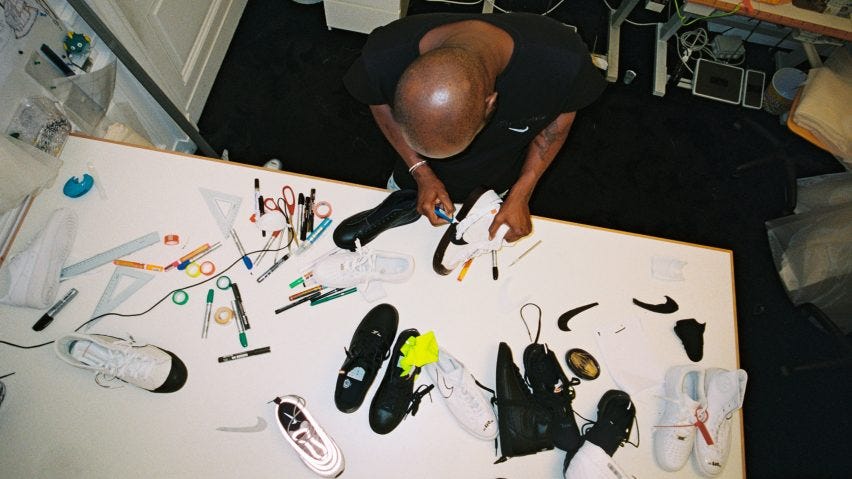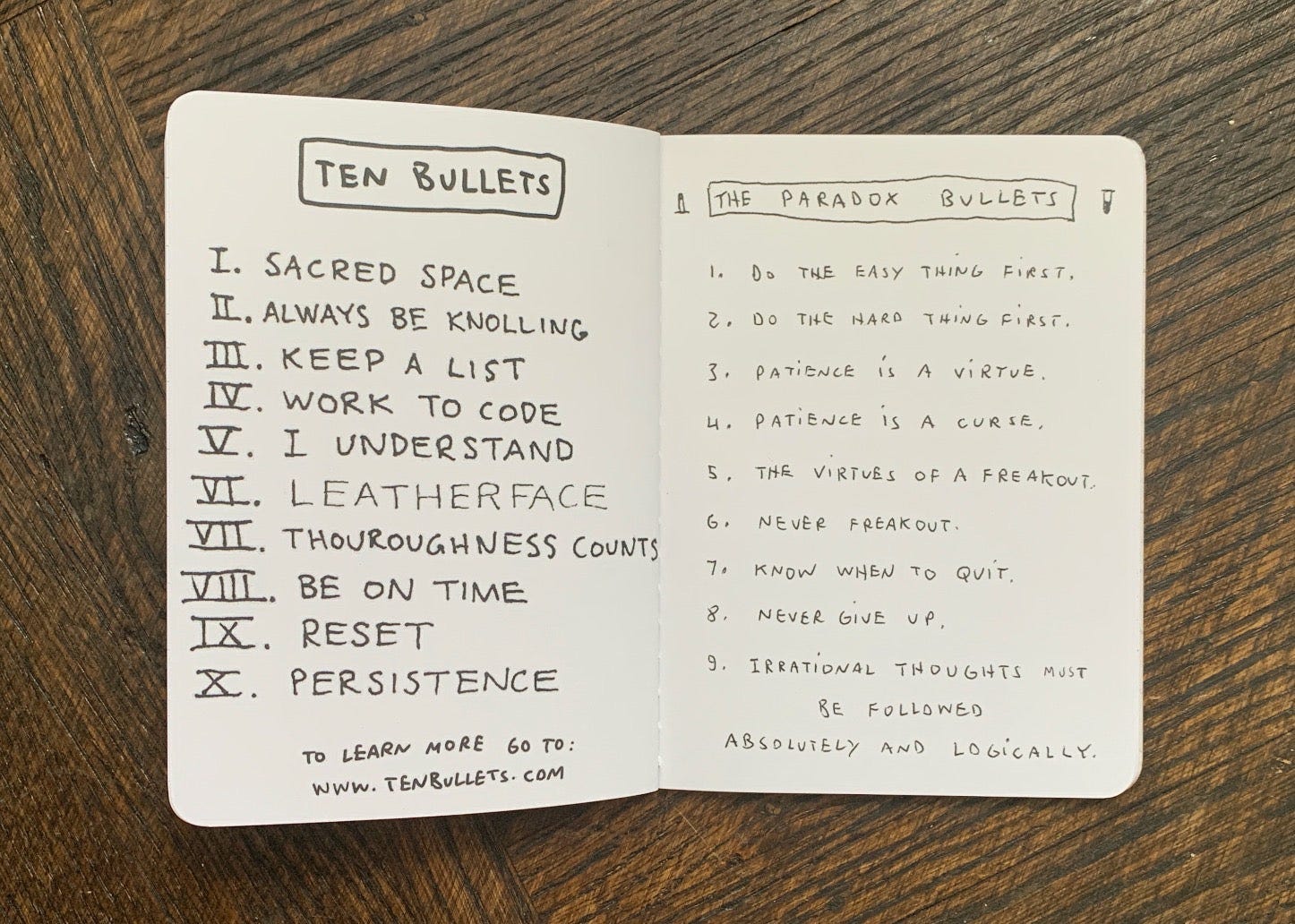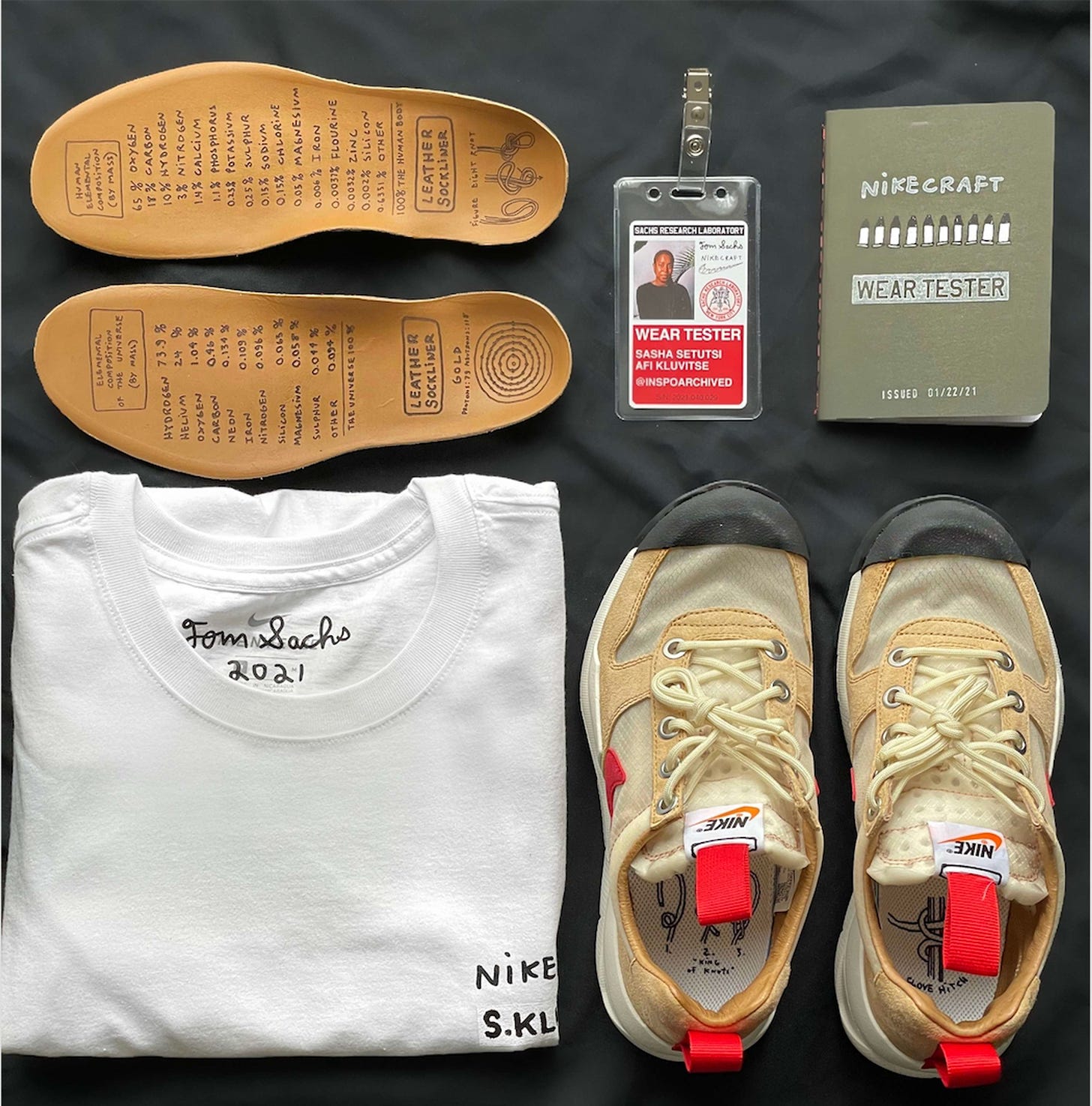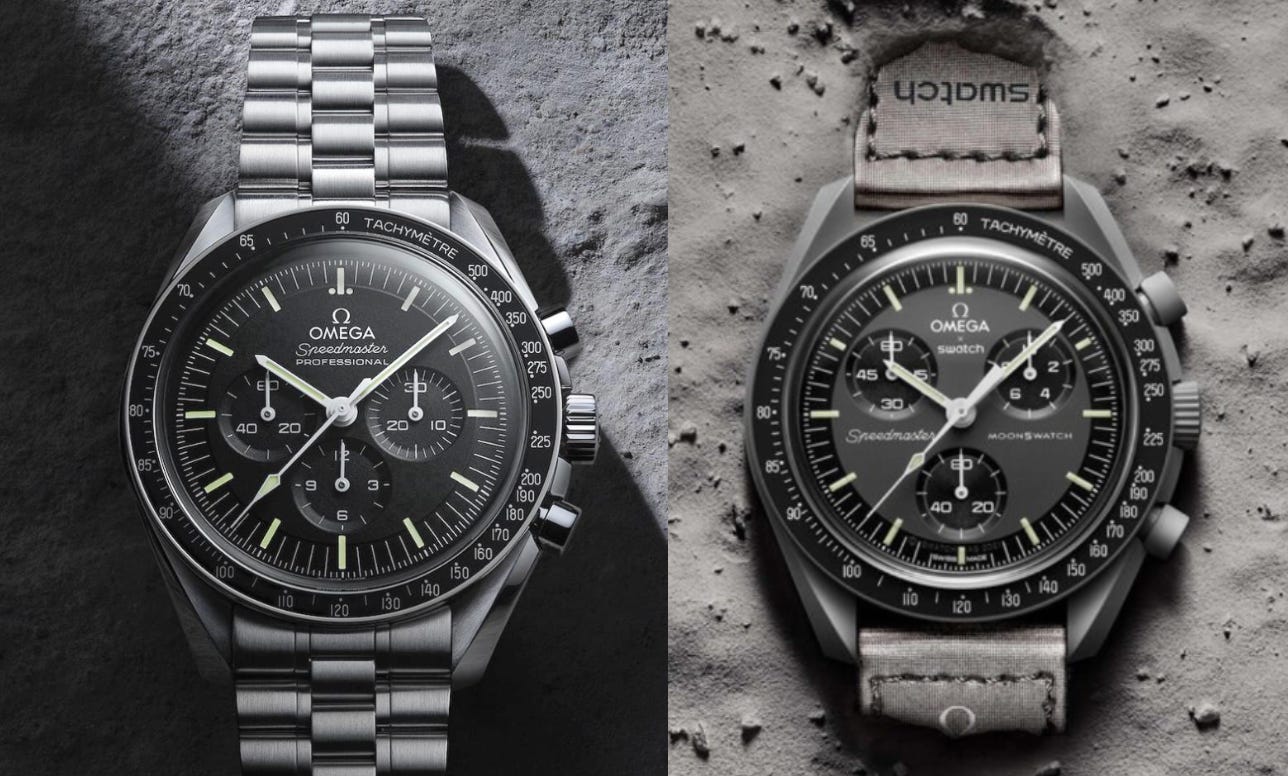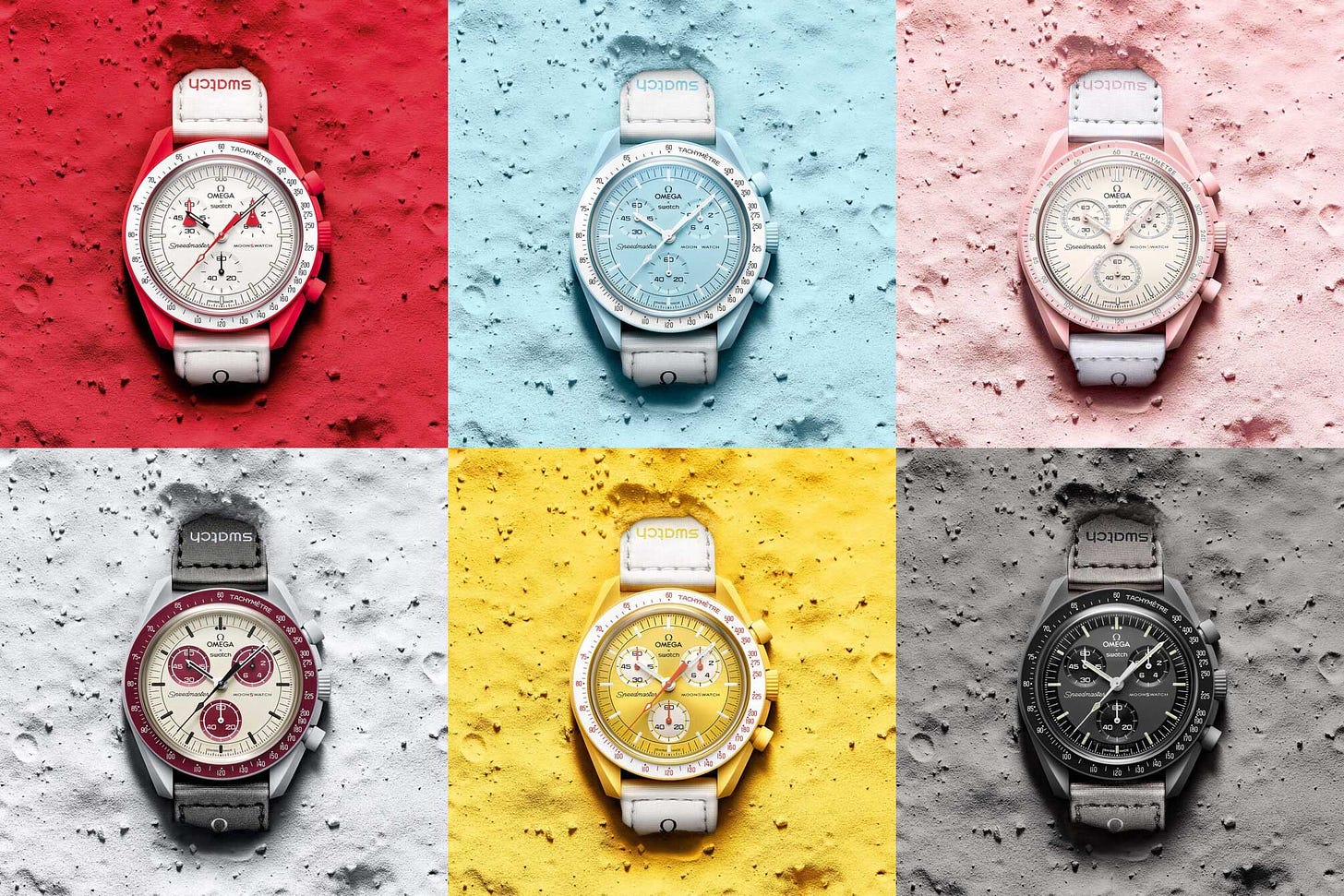The Collaboration Manifesto
The trends, insights, and strategies that define the best collaborations
Virgil Abloh was famous for reworking conventional designs by challenging our visual perspective. His body of work spans countless successful collaborations, each of which became a defining cultural moment. Abloh had the rare gift of turning products into experiences, somehow equally innovative yet nostalgic. Abloh coined the “Three Percent Rule,” the law that an object or idea needs to be altered by only 3% to become something new. As collaborations become more esoteric and seemingly random, we find brands at both ends of the spectrum - very true to their source material or a new idea altogether.
The purpose of Three Percent Rule is to present findings from years of experience working with the biggest brands in the world across fashion, tech, and luxury. Three Percent Rule is the only publication focused on brand collaborations and the strategies that drive them from an insider perspective. For the inaugural article, I’ve compiled trends and strategies that have become key components to a successful collaboration.
What is the Purpose of a Brand Collaboration?
The purpose of collaborating with another brand is to act on a shared vision for something new and develop a cohesive narrative together. From a business perspective, the purpose of a collaboration is to re-contextualize a brand. What separates a meaningful collaboration is these key buckets:
1) Collaborations must amplify two or more unique subcultures
2) Collaborations must offer a distinct point of view from multiple brands that is equally visible in the end product
3) Collaborations must piss off brand purists
Collaborations must amplify two or more unique subcultures
Few brands have had a rise as prolific as Palace. The brand is synonymous with Britain's many subcultures - football, pub culture, but most importantly, skateboarding. Before Palace became every marketer’s dream collaborator, they had to cultivate the quirky brand image that is now present in all their collections. Other than their eccentric designs which resonate deeply with the skate & art community, Palace’s creative direction has an off-center nature to them, hiding unique visual cues in plain sight. They also became famous for funny product descriptions like ‘Chill Blue is a bangin’ pantone color.’ You can see this style present in all of their most successful collaborations, offering a fresh perspective to otherwise legacy or heritage brands.
Palace x Ralph Lauren - Palace took the iconic polo bear sweater - An Americana staple and added a uniquely Palace twist. While the Polo Bear is typically pictured skiing or engaging in other collegiate activities, here we see him doing a kickflip in a Palace sweater. This is one of the few times in history that the Polo bear has been remixed.
Palace, while being a widely successful global brand like Supreme, is the rare company that has a strong regional identity. Brands like this are primed for luxury collaborations. Brands like Madhappy and Aime Léon Dore do this very well by taking elements from 90s LA and and NY culture, respectively. A regional identity is one of the strongest points of view you can offer to a collaborating partner.
Collaborations must offer a distinct point of view from multiple brands that is equally visible in the end product
Tom Sachs famously once stated “The Reward for Good Work is More Work.” As a sculptor, Tom’s work ethic is so renowned, he created a code of conduct called the Ten Bullets which govern his studio and broader life. These bullets appear consistently throughout his work and design process, but also his collaboration with Nike, ‘Nikecraft.’
The Mars Yard collection was a collaboration between Sachs and Nike as part of a program called ‘Space Program Mars’. The program was meant to put the shoes under the extreme conditions of space to test their durability by participants called ‘weartesters.’ By becoming a weartester, you’ve proven you align with the Ten Bullets and the message of Nikecraft. The message was clear, “NIKECRAFT products are developed for athletes, not consumers.” Recall Nike’s vision statement from Bill Bowerman, “If you have a body, you are an athlete.” Both the Nikecraft and Nike vision statements complement each other by amplifying athleticism and the mutual ideas of Sachs and Nike, authenticity, innovation, and inspiration.
In early 2022, Tom Sachs shoes became slightly more accessible with the release of the General Purpose Shoe (GPS). Sachs’ idea was direct, “your sneakers shouldn’t be the most interesting thing about you.” The marketing leaned into the boringness of the shoe and made the wearers see them as tools. Through daily wear, each stain and each wrinkle showed a new story; no two pairs are the same after wear. This may seem like a differing point of view to the highly limited Mars Yard since the GPS is so widely available. This is a very important insight from Tom Sachs that separates his collaborations from good to great. Regardless of your product strategy, do not stray from your original ethos or point of view. Ultimately, the underlying point of view is the same. Wear your sneakers till death.
Collaborations must piss off brand purists
Every brand wants a cult following. Few fan bases are as passionate as watch collectors. The appeal of watch collecting is both mechanical and aesthetic, leading to very strong opinions. When Omega collaborated with Swatch in 2022 to create the MoonSwatch retailing at just over $260, there was a wide range of emotions. The original Omega Speedmaster, retailing at under $7k USD, is hailed as one of the greatest watches of all time. They are highly collected and coveted among the vintage community for the most minute details. Swatch has a similar fanbase much more drawn to the eclectic and highly vibrant designs than the mechanical components. This collaboration tapped into two passionate demographics of collectors.
With original Moonwatch proportions, Swatch used its energetic color palette to roll out multiple colorful iterations inspired by different planets. At $260, original moonwatch owners thought this would cheapen the brand while others thought it was an excellent gateway to more serious watch collecting. Despite the discourse, the collaboration was a conceptual masterpiece. It is exactly what you would expect from both brands, but you never thought it would exist.




